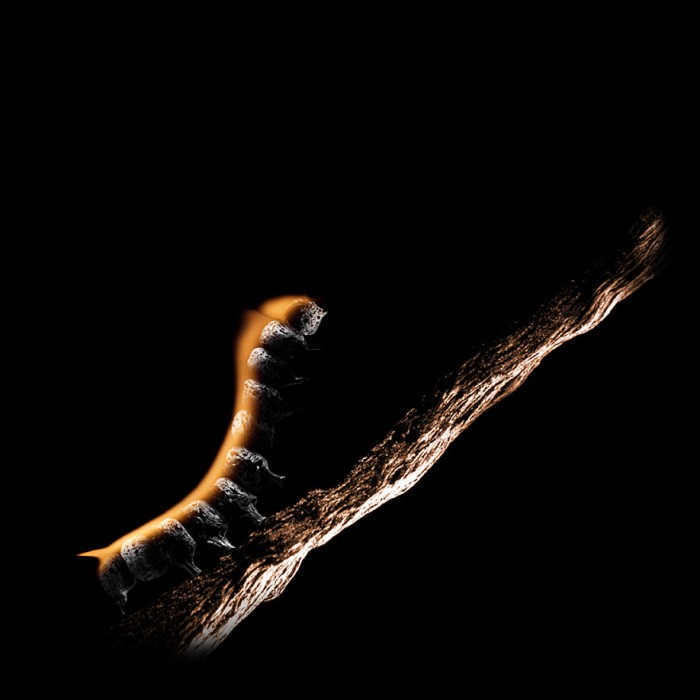|
|
Burning Matches Art
|
Friction matches
The first "friction match" was invented in 1826 by English chemist John Walker, a chemist and druggist from Stockton-on-Tees. He experimented with "percussion powders" made up mainly of potassium chlorate. His early experiments led to a wood splint dipped in a paste of sulfur, gum, potassium chlorate, sugar and antimony trisulfide. The match was drawn between a fold of sandpaper to ignite it. Between 1827 and 1829, Walker made about 168 sales of his matches. It was however dangerous and flaming balls sometimes fell to the floor burning carpets and dresses, leading to their being banned in France and Germany. Walker either did not consider his invention important enough to patent or neglected it. In order for the splints to catch fire, they were often treated with sulfur and the odor was improved by the addition of camphor. A version of Walker's match was patented by Samuel Jones, and these were sold as lucifer matches. These early matches had a number of problems- an initial violent reaction, an unsteady flame and unpleasant odor and fumes. Lucifers could ignite explosively, sometimes throwing sparks a considerable distance. Lucifers were manufactured in the United States by Ezekial Byam. The term "lucifer" persisted as slang in the 20th century (for example in the First World War song Pack Up Your Troubles) and in the Netherlands and Belgium today matches are still called lucifers.
Lucifers were however quickly replaced after the discovery in 1830 by Frenchman Charles Sauria who substituted the antimony sulfide with white phosphorus. These new phosphorus matches had to be kept in airtight metal boxes but became popular. In England, these phosphorus matches were called "Congreves" after Sir William Congreve (1772–1828) while they went by the name of "loco foco" in the United States. The earliest American patent for the phosphorus friction match was granted in 1836 to Alonzo Dwight Phillips of Springfield, Massachusetts. From 1830 to 1890 the composition of these matches remained largely unchanged although some improvements were made. In 1843 William Ashgard replaced the sulfur with beeswax, reducing the pungency of the fumes. This was replaced by paraffin in 1862 by Charles W. Smith, resulting in what were called "parlor matches". From 1870 the end of the splint was fireproofed by impregnation with fire-retardant chemicals such as alum, sodium silicate and other salts resulting in what were commonly called as a "drunkard's match" and prevented the accidental burning of the user's fingers. Other advances were made for the mass manufacture of matches. Early matches were made from blocks of woods with cuts separating the splints but leaving their bases attached. Later versions were made in the form of thin combs. The splints would be broken away from the comb when required. A noiseless match was invented in 1836 by the Hungarian János Irinyi, who was a student of chemistry. An unsuccessful experiment by his professor, Meissner, gave Irinyi the idea to replace potassium chlorate with lead dioxide in the head of the phosphorus match. He liquefied phosphorus in warm water and shook it in a glass foil, until it became granulated. He mixed the phosphorus with lead and gum arabic, poured the paste-like mass into a jar, and dipped the pine sticks into the mixture and let them dry. When he tried them that evening, all of them lit evenly. Irinyi thus invented the noiseless match. He sold the invention to István Rómer, a match manufacturer. Rómer, a Hungarian pharmacist living in Vienna, bought the invention and production rights from Irinyi for 60 forints. Rómer became rich and Irinyi went on to publish articles and a textbook on chemistry, and founded several match factories.
|
|









